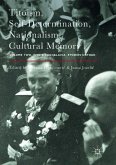The investigation on the history of the Yugoslav and Macedonian Jews between the two world wars was developed through a number of researches in the archives in Macedonia, Serbia, Greece and Israel. The project itself was based on three levels and approaches; from an international position of the Jews, after WWI; the regional, within the history of the Yugoslav Jewry; and the position of the Sephardic Jewry on a local level, i.e. in Macedonia itself. The international context required a use of international acts brought in regard to minority rights protection, after the WWI during the Paris Conference and the establishment of the Geneva System. The second level observed the position of the Macedonian Sephards within the overall Yugoslav Jewry, which was consisted of Ashkenazim, Sephardim as well as of the Orthodox Jews, as a separate group. The third level deals with the everyday life of the Macedonian Sephards from 1912 to 1941, as well as their social, cultural, political and economic development in one micro environment. The inter-ethnic relations, which were part of the political, social and Jewish reality in Macedonia, were also investigated in this study.








